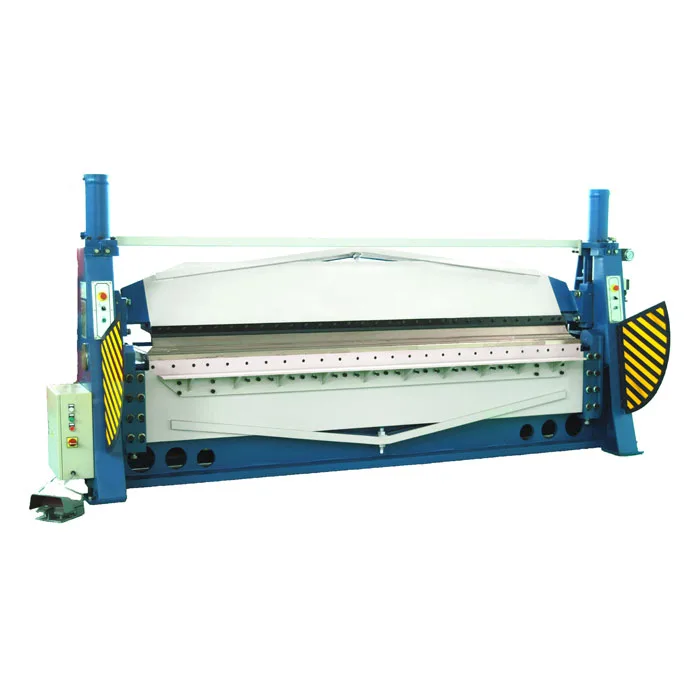
From Flat to Formed- Transforming Metal Plates with Rolling Machines
- By:Metmac
- 2024-05-08
- 205
From the towering skyscrapers that define our skylines to the intricate automobile bodies that grace our roads, metal plays a vital role in shaping the world around us. Metal plates, in particular, serve as the foundational building blocks for countless structures and objects. To transform these flat sheets into the complex shapes that serve various purposes, rolling machines are employed, revolutionizing the metalworking industry. This article delves into the intricate process of rolling metal plates, exploring the versatile applications and the technological advancements that have propelled this technique to the forefront of metalworking.
Unveiling the Rolling Process: A Journey from Flat to Formed
Rolling machines, with their massive rollers, apply immense pressure to metal plates, gradually bending and shaping them into desired contours. The process begins with feeding a flat metal plate into the machine, where it encounters a series of rollers arranged in a specific sequence. As the plate passes through these rollers, they progressively reduce its thickness and alter its shape, transforming it from a planar sheet to a curved or corrugated form.
Applications: A Symphony of Functions Across Diverse Industries
The versatility of rolling machines extends to a wide spectrum of industries, each leveraging the capabilities of this technology to meet specific demands. From the automotive sector, where rolling machines shape body panels with precision, to the construction industry, where they produce durable structural components, rolling plays a pivotal role in manufacturing. In the energy sector, rolling machines contribute to the production of wind turbine blades and pressure vessels, harnessing the strength and durability of metal for clean energy applications.
Technological Advancements: Refining Precision and Efficiency
The advent of technological advancements has significantly refined the rolling process, enhancing both precision and efficiency. Computer-aided design (CAD) and computer-aided manufacturing (CAM) systems digitally simulate the rolling process, optimizing roller configurations and reducing material waste. Additionally, advanced sensors monitor and adjust roller pressure and temperature in real-time, ensuring consistency and minimizing defects. These advancements empower manufacturers to produce complex shapes with greater accuracy and reduced production times.
Material Considerations: Balancing Strength and Formability
The success of the rolling process hinges on the careful selection of metal plates. Different metals possess varying mechanical properties, including strength, ductility, and formability. High-strength metals, such as steel and titanium, offer greater structural integrity but may require more force to roll. Conversely, softer metals, such as aluminum and copper, exhibit superior formability, allowing for more intricate shapes. Material selection is crucial to achieving a balance between desired shape and structural integrity.
Conclusion: A Transformative Force in Metalworking
Rolling machines have revolutionized the metalworking industry, enabling the production of complex shapes with precision and efficiency. From mundane applications to cutting-edge engineering feats, rolling technology has permeated countless industries, shaping the structures, objects, and innovations that define our world. As technology continues to advance, rolling machines will undoubtedly continue to evolve, further expanding their capabilities and enabling the realization of even more ambitious metalworking projects.
-
Sheet Metal Shearing Machine: The Foundation of Precision Cutting with METMAC
2025/11/23 -
Sheet Metal Press Machine: The Cornerstone of Precision Fabrication with METMAC
2025/11/23 -
Sheet Press Machine: The Engine of Precision Metal Forming with METMAC
2025/11/23 -
Sheet Metal Equipment: The Backbone of Modern Fabrication and the METMAC Standard
2025/11/23
-
Advanced Sheet Metal Rolling, Laser Cutting, and Folding Machines for Precision Fabrication
2025/10/31 -
High-Performance Sheet Metal Bending and Cutting Machines for Modern Fabrication
2025/10/31 -
High-Quality Sheet Metal Equipment for Sale: Efficient Solutions for Modern Manufacturing
2025/10/31 -
High-Performance Sheet Metal Equipment for Sale: Forming and Shearing Solutions for Modern Fabrication
2025/10/22
-
A Guide to the Latest Innovations in Sheet Metal Folding Machines
2024/11/29 -
Key Features to Consider When Investing in a Sheet Metal Folding Machine
2024/11/28 -
Enhancing Precision with Advanced Sheet Metal Folding Machines
2024/11/27 -
How to Choose the Right Sheet Metal Folding Machine for Your Workshop
2024/11/26







